Inco Industria Colori was founded in Italy more than thirty years ago as a producer of inorganic pigments for the ceramic sector.
Over the years, the company has grown, evolved and digitalised its production processes in step with the development of the ceramic industry, introducing new ranges of inks alongside its pigment lines.
Now more than ever, the company is exploiting its chemical and ceramic expertise and the skills it has acquired over the years to develop innovative products and solutions that provide unique added value for its customers.
One of these is Inco’s new series of HSC – High Solid Content inks, which deliver major colorimetric benefits along with significantly reduced atmospheric emissions of malodorous organic compounds.
Combining excellent definition with high levels of performance, these inks mark the culmination of a long process of development that began in 2013 and has brought steady improvements in terms of both colour yield and environmental emissions.
For several years, leading ceramic companies in Italy and worldwide have been using Inco High Solid Content inks with great success.
The new HSC ink series is an improvement on previous HSC lines as it maintains the same outstanding levels of performance while offering advantage in terms of industrial production.
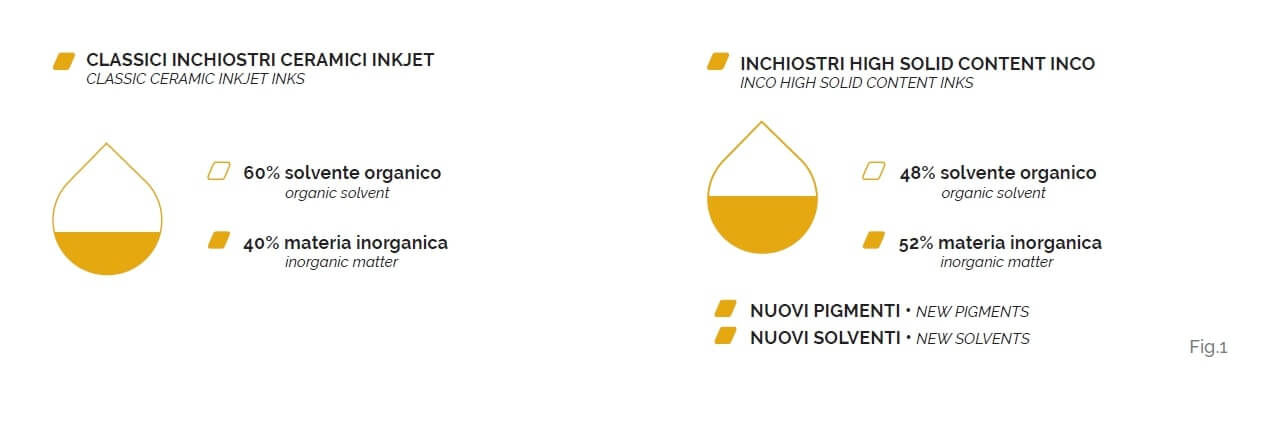
But what is meant by HSC – High Solid Content?
High solid content inks are inks that contain a high percentage of inorganic matter (Fig. 1).
But how much do they contain exactly?
A conventional ceramic inkjet ink has a percentage of inorganic matter of between 25% and 45% while the remaining 55-75% consists of organic solvent.
The organic solvent is indispensable because it acts as a medium and allows inorganic pigments or materials to be applied to the surface of a tile using single pass digital inkjet printers. However, the solvent itself has no aesthetic value and burns off during the firing process, producing harmful and malodorous volatile organic compounds (VOCs) which are emitted from the flue.
The new series of Inco HSC inks differ from conventional ceramic inks primarily in terms of the high percentage of inorganic matter they contain (currently between 50% and 58%), as well as the fact that they use new-generation pigments and solvents.
The pigments have high colour intensity while the solvents emit very limited quantities of VOCs during firing, resulting in extremely low levels of odorous emissions.
Inco High Solid Content inks stand out for their excellent performance.
Firstly, they are formulated to ensure a high suspending capacity towards inorganic matter as well as excellent lubrication of the printheads, thereby guaranteeing exceptional print quality (comparable with conventional ceramic inks).
They are also industrially tested on all printers and printheads on the market and do not require the use of special cleaning devices or protocols, making them a ready-to-use solution.
Finally, due to their high content of inorganic matter (as well as the type of inorganic matter used), they allow for greater aesthetic potential, lower consumption and a significant reduction in VOC emissions from ceramic flues.
To understand the reasons for these significant improvements, we first need to calculate the quantity of inorganic matter actually applied to the surface of the ceramic tile during digital application.
This inorganic matter serves to decorate the ceramic tile and give it aesthetic value.

How much inorganic matter and how much organic solvent will be applied?
Assuming that a conventional ceramic ink contains 40% inorganic matter (the percentage is actually between 25% and 45%), a simple mathematical calculation shows that the application quantity is 8 g/sq.m of inorganic matter, which is what gives the ceramic tile its “colour” or “material effect”, and 12 g/sq.m of organic solvent responsible for VOC emissions in flue gases and consequently environmental pollution and unpleasant odours.
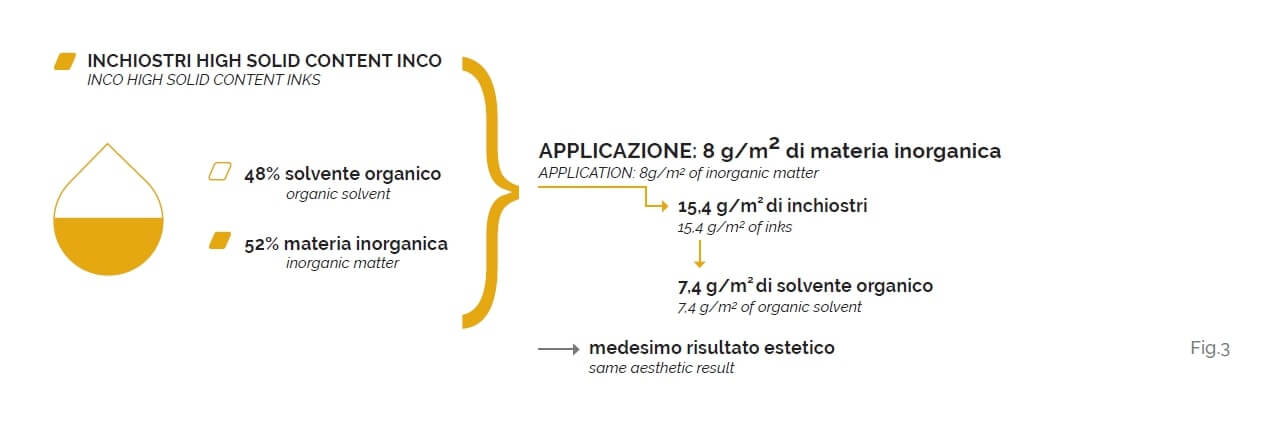
Let’s consider a High Solid Content ink containing 52% inorganic matter (actually between 50% and 58%).
How much ink and how much solvent will be applied?
Applying 8 g/sq.m of inorganic matter we will have a consumption of 15.4 g/sq.m of HSC ink and 7.4 g/sq.m of organic solvent, respectively 23% and 38.3% less than with a conventional ceramic ink (Fig. 4).
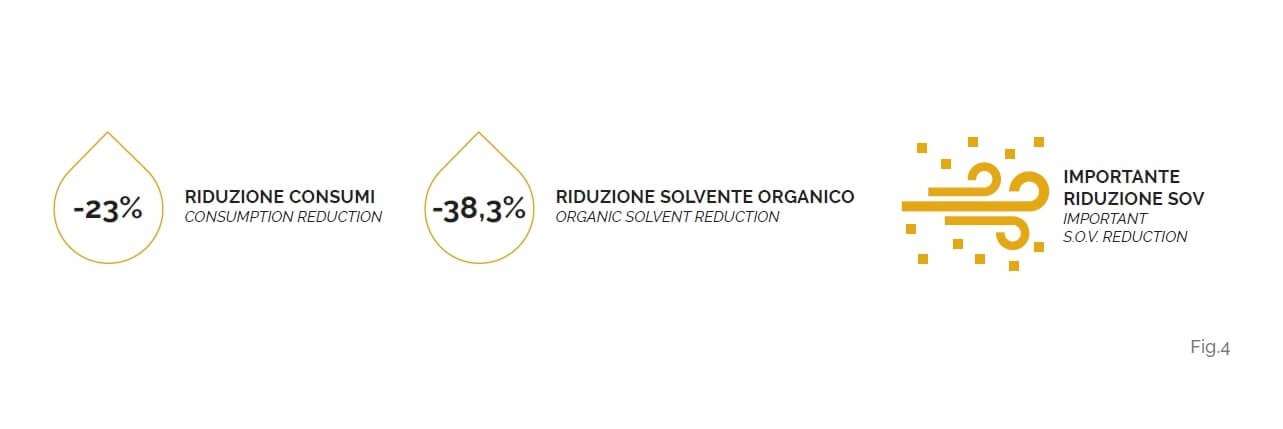
This means that for the same quantity of inorganic material applied to the ceramic tile, we consume a smaller quantity of ceramic ink, which brings very significant environmental benefits in terms of reduced VOC levels in flue gases.
Just like water-based inks, High Solid Content inks are recommended in the guidelines issued by the Italian environmental control authorities due to their low content of organic solvent.
Compared to applications with conventional ceramic inks, Inco High Solid Content inks are able to add value to products while maintaining the same characteristics.
This is achieved without increasing the applied quantity of organic solvent and therefore without increasing VOC emissions to the atmosphere.
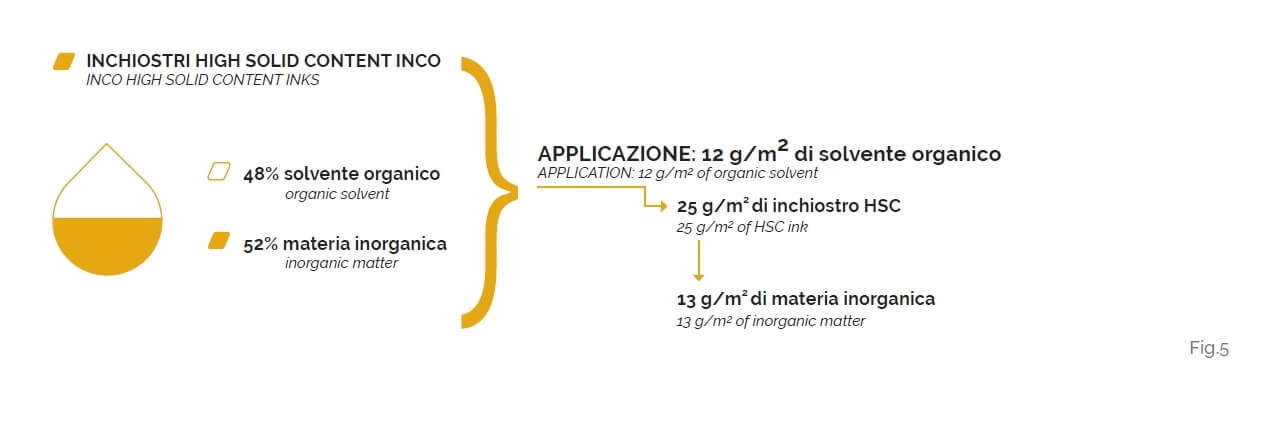
In other words, we apply 12 g/sq.m of organic solvent.
How much inorganic material will be applied?
A mathematical calculation shows that we apply 25 g/ sq.m of HSC ink containing a total of 13 g/sq.m of inorganic material, 62.5% more than would be applied with a conventional ceramic ink.
In other words, for the same quantity of VOCs we apply more inorganic material, resulting in greater aesthetic potential.
Along with their excellent quality, performance and aesthetic potential, Inco HSC – High Solid Content inks also ensure better definition.
The new type of organic solvents not only reduce VOC emissions in flue gases but also have lower levels of water repellency and a greater affinity with the tile surface, resulting in extremely high printing quality.

To check that the new series of HSC inks would actually deliver all the benefits shown by the mathematical calculations, Inco’s R&D laboratories conducted extensive experimentation, first in the lab and then at an industrial level.
The mathematical calculations performed here as examples compare a conventional ink with a 40% solid content with an HSC ink with a 52% solid content. In reality, the difference in terms of content of inorganic matter is in many cases much greater than this (e.g. 35% compared to 58%), so the benefits are proportionately larger.
The advantages of both the new pigments and the new solvents were also verified. Extensive industrial tests confirmed all the improvements and showed that the calculated reductions were actually exceeded.
These results have been endorsed by certified inspection bodies.
For all these reasons, leading ceramic companies in Italy and around the world have already chosen the new series of Inco High Solid Content inks and appreciate the aesthetic potential offered by
the wide range of colours and digital materials available in both neutral and intense tones.
+COLOUR +GREATER DIFINITION +MATERIALE EFFECTS -EMISSIONS -ODOURS
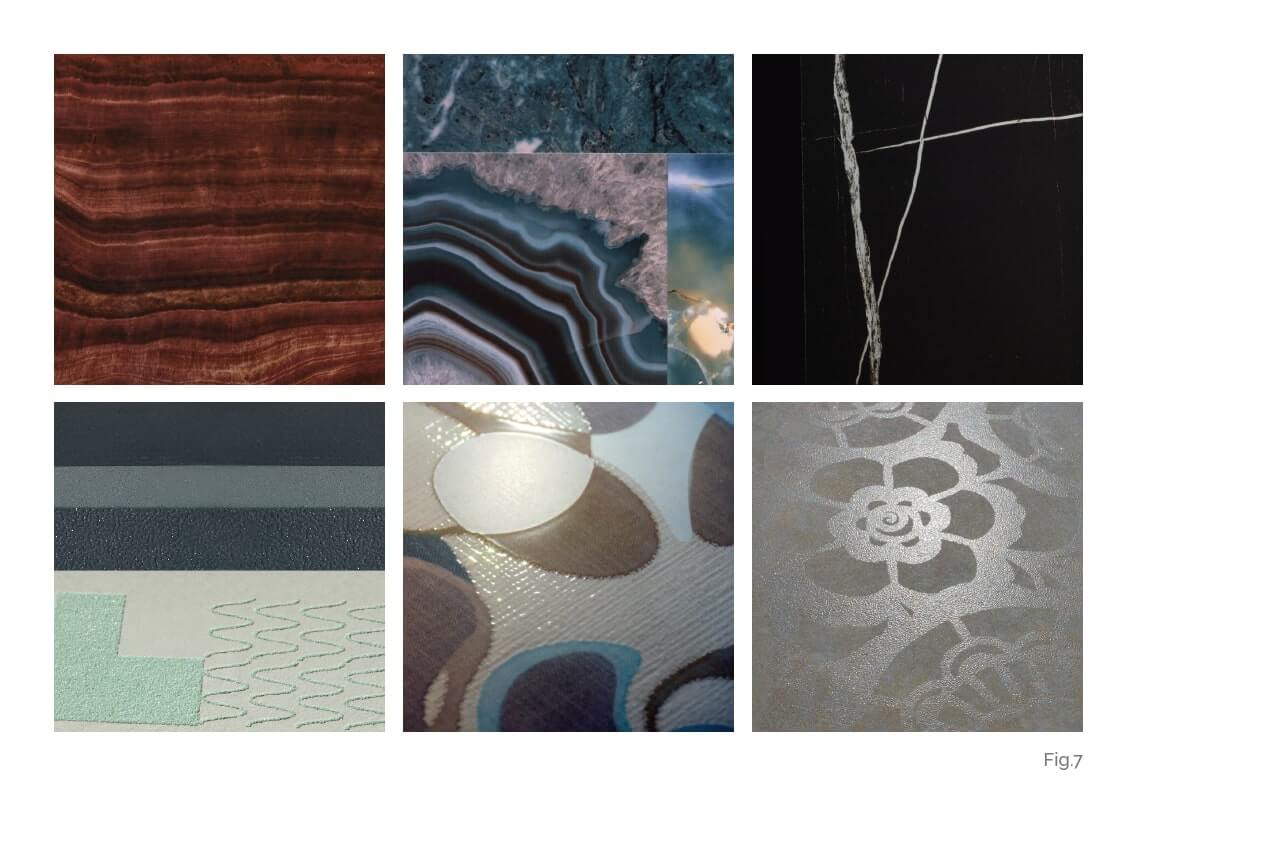
See the article on Ceramic World Review 136/2020 (pag: 60-61-62-63-64)
PDF version